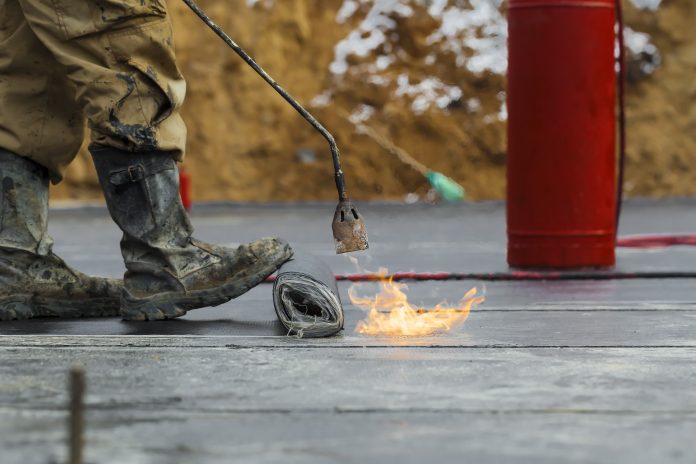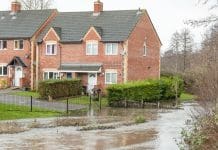In this article, Michael Jones, National Waterproofing Manager at Peter Cox, shares a summary of the changes made to British Standard 8102:2022
While often unnoticed in the day-to-day life of businesses, British Standards underpin best practices in industries across the country. They constantly evolve in line with the latest knowledge, techniques and environments.
The launch of the new British Standard BS 8102:2022 is no different and will have major ramifications for those within the waterproofing industry. After a period of review, the new version of BS 8102 was released on 31st March 2022, and is considered one of the most important documents when it comes to designing and specifying waterproofing systems in the UK.
The revision of the British Standard reflects the latest developments and materials used in below-ground structures, as well as expanding and improving its scope to include structures such as buried roofs, podium decks and tunnels.
There is a strong economic rationale behind the latest set of changes to the standard. As house prices and interest rates continue to rise, many may be looking at creating additional living space in areas such as basements instead of moving. While this might add value to the property, it’s vital that these below-ground structures are well constructed and maintained to avoid additional, unnecessary future costs.
What is BS 8102:2022?
BS 8102:2022 ‘Protection of Below Ground Structures Against Water Ingress’ is the code of practice for protecting below-ground structures against water ingress. The standard recognises that it is essential for the success of any project involving below-ground structures that strategies for dealing with all external sources of groundwater, surface/flood water, soil gases and contaminants are considered from the very earliest stages of the planning and design process. It covers waterproofing barrier materials applied to the structure, drained cavity construction, and structurally integral watertight construction.
Fundamentally, BS8102:2022 has been developed as a cornerstone to reducing risk, which includes the reduction of the frequency or severity of failures and includes fire protection, life cycle, safety, and design approaches. There have been many changes throughout the updated version of BS 8102 – here are just some of the most important points.
Changes to the scope
The changes to the overall scope are the first notable change in the British Standard compared to BS 8102:2009. The previous standard was only designed for ‘the protection of below-ground structures against water from the ground’.
This updated version now considers – and in greater detail – the risk of moisture and water entering the structure through doors, light wells and air bricks. The expanded scope also now includes buried roofs and podium decks: two increasingly popular structures, but ones that bring their own challenges regarding waterproofing.
As a result, this means that the overall design of a structure should include not only the below-ground waterproofing but wider conditions too.
Waterproofing design
The standard recommends that a waterproofing design specialist should be consulted at the earliest stage of a project (the design stage) to make any necessary approvals on amendments that will affect the overall waterproof design. To ensure waterproofing designs are durable and fit for purpose, correct detailing and implementation of penetrations are important disciplines.
By recommending that a waterproofing design specialist be involved from the start of a project, the amended standard emphasises ensuring that good planning, correct sequencing and site management processes are in operation.
It also lends further credence and recognition to the importance of waterproofing as being critical to the overall success of a project. What’s more, if appointed at the design stage, a specialist may actually be able to save the client money by assisting with the creation of a more watertight structure
Changes to the grades of waterproofing
Another key change to the new standard concerns the amendments to the grading of waterproofing. The previous version in 2009 had three gradings of waterproofing, from some allowance of seepage to a full and comprehensive waterproofing system and consideration for ventilation for habitable spaces. Grade one in BS8102:2022 has now been subdivided into two new categories, Grade 1A and 1B.
Grade 1A
Seepage (slow transmission of water) and damp areas (slightly wet but no transmission) from both internal and external sources are tolerable if this does not impact the proposed use of the space. This can be described as a wet environment where free water can enter.
Grade 1B
No seepage (slow transmission of water), but damp areas (slightly wet but no transmission) from internal and external sources are tolerable. This means that free water is not allowed to enter, but damp patches may occur.
Other than splitting Grade 1 into two separate categories, further definitions have also been added to Grade 2 and Grade 3. This is to avoid confusion regarding what qualifies as a wet, damp or dry structure and whether the source of the dampness comes from external or internal sources.
Also, in a significant update to the previous 2009 version, seepage has been defined separately to damp and specifically mentioned as either acceptable or unacceptable depending on the Grade of protection. This is mainly due to the risk that, if there is seepage, mineral deposits may also form.
Other amendments to BS 8102:2022
There are several other notable amendments to BS 8102:2022 which are worth noting, such as:
- A new section on the importance of waterproofing buried decks below ground level and how they should differ from roofs above ground level.
- Regarding servicing and maintenance of Type C Cavity Drainage Membranes, BS8102:2022 states that these should now have a maintenance schedule – with the first service inspection taking place during the handover stage – and these details ideally recorded to prove that the system is working correctly.
- An emphasis is that all waterproofing designs should be continuous with the damp proof course level or 150mm above the external ground level.
The revision of this hugely important British Standard contains significant changes that cannot be ignored by those looking to prevent water ingress.
Alongside new technologies available to waterproofing designers, it includes the requirement for a qualified waterproofing design specialist team to be involved – an expert that will reduce the risk of issues during a project while ensuring high-quality workmanship.
It’s important that manufacturers, specifiers and end clients digest the latest best practice guidance to gain some peace of mind that waterproofing can be installed consistently to a high standard.











![[VIDEO] Making DorTrak reports easy to read with Fireco Inspecting fire doors at Fireco, firedoor technology, 2023](https://www.pbctoday.co.uk/news/wp-content/uploads/2024/04/JPZ_2364-web-218x150.jpg)
![[VIDEO] Re-flow Field Management review by Traffic Management Installations When TMI began subcontracting for councils and government bodies, they wanted to present their site reporting in a more professional manner](https://www.pbctoday.co.uk/news/wp-content/uploads/2025/03/TMI-Media-1-218x150.png)

